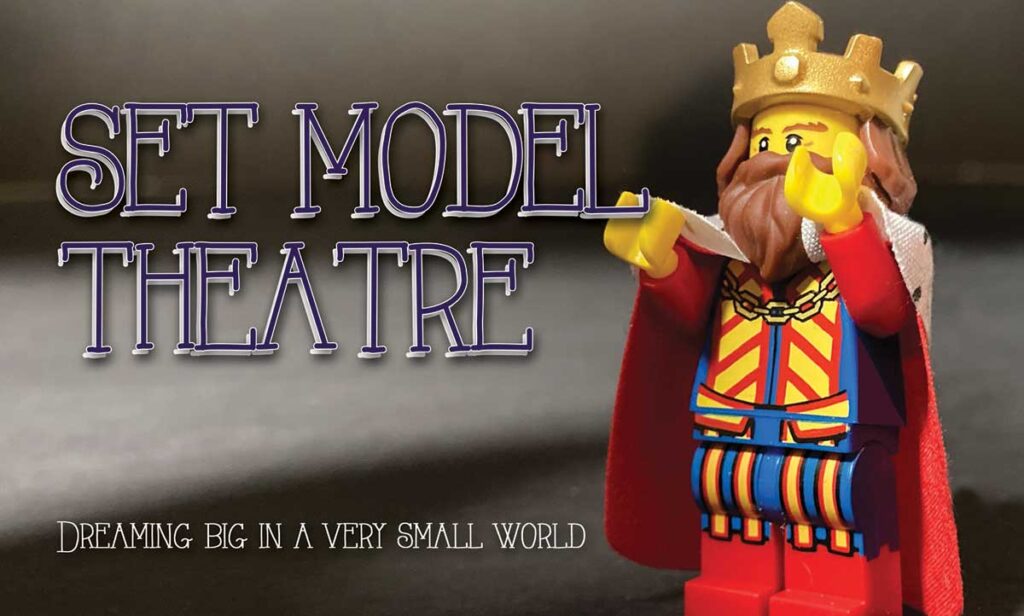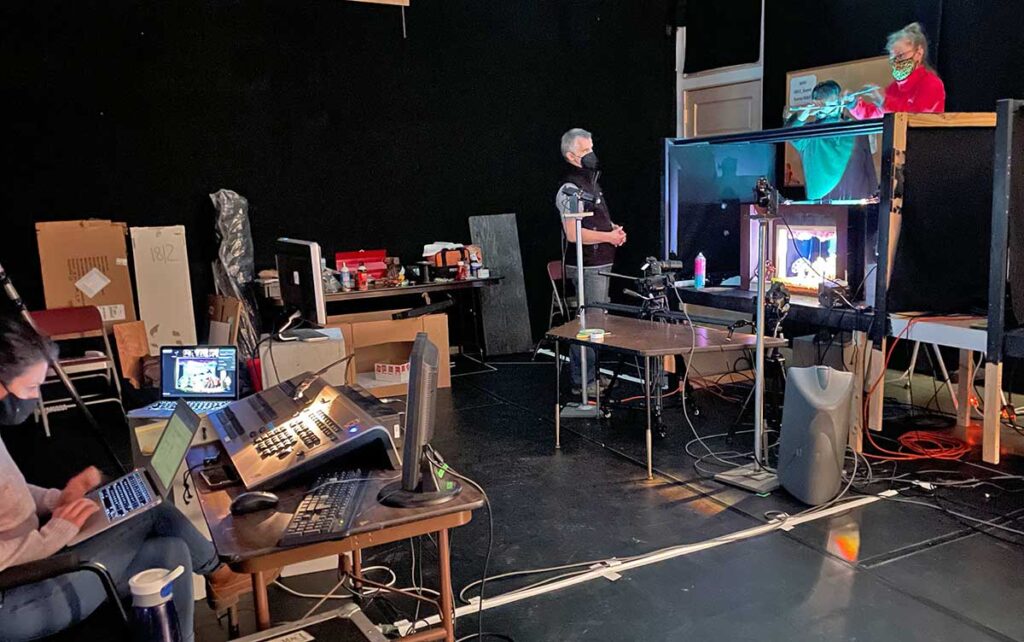Sound design, when done well, blends so seamlessly into a production that it feels organic. Think about the sound of a lightsaber in “Star Wars” or the dinosaur roar in “Jurassic Park.” But the art of sound design can involve many complex techniques and tools. In Philadelphia, Daniel Ison has vaulted to the upper echelon of the industry. The out Wildwood, N.J. native began his career in the local theater scene after graduating from Eastern University, a small college in the Philly burbs, and has since worked for many of the top companies in the region as a technician, composer, musician and actor. In 2019, he won the prestigious Barrymore Award for his work on the Arden Theatre Company’s production of “Gem of the Ocean.”
Ison has kept busy throughout the COVID-19 pandemic, creating music and soundscapes for digital productions and audio plays alike. He’s currently featured in 1812 Productions’ “Set Model Theatre,” a unique, pandemic-specific programming departure for the comedy-focused company. Artistic director Jennifer Childs tasked fifteen local artists with creating concepts for a hypothetical production of “King Lear,” with an emphasis on finding the comedy in the play. The artisans documented their creative processes in five streaming episodes. Ison spoke recently with PGN about the challenges and unexpected pleasures of working in the digital space, as well as what he’s looking forward to when in-person theater resumes.

Before we talk specifically about your current projects, I wanted to ask how you got interested in music and sound design as a career.
I haven’t answered that question in a while! I started off doing music in high school. I picked up guitar my sophomore year, and I was really bad at it. At the time, I was super religious, and I played a song at church to get over stage fright. My pastor said, “You’re really good at academics, so why don’t you stick to that.” And I basically said, “F*** you, dude!” I then doubled down, took a guitar class and music composition class my senior year, and that summer I was auditioning for college for music. So, there’s a lot of spite that set me on my journey. (Laughs.)
With the increase in streaming and audio theater during the pandemic, the importance of sound design has been more visible than ever. How have you found working in the digital space over the last year?
It hasn’t been too much of a difference, luckily. The only difference for my work process has been that you’re not stuck in tech in a room for twelve hours. But all the work I would be doing normally, whether it’s research or writing my own pieces, or cobbling sound together, has stayed pretty much the same. The end product is just what has changed. I was in the middle of having a really good season last year, and I had a pretty decent amount of work coming my way. I don’t necessarily think that’s the situation for most people. There’s only maybe six really in-demand sound designers in Philly, and I just recently became one of them.
Tell me a little about how you got involved with “Set Model Theatre.” What has the experience been like?
It was a hoot! It’s definitely one of my favorite projects that I’ve worked on during quarantine, specifically because what the piece was doing was geared for this weird set of constraints we have. Instead of trying to do a reading over Zoom, which is always a little bit of a headache, it’s actually making something that utilizes Zoom and utilizes the situation. The process was great. I got involved because Jen Childs asked me to get involved. They were looking for a designer, we got the ball rolling, and it was a blast. And I’m a huge fan of Jorge [Cousineau, the project’s video designer], so it was a real delight to go with the process and see what he created at the end. I’m still pretty astounded.

We are already starting to see some companies move back to in-person performances, with an expectation that even more options will be available in the fall. What are some of the things you hope the theater world takes away from the experience of the last year, and what are some of the things you are looking forward to having back again?
I think something that is going to be very useful at this time for theater companies is figuring out other models for sharing work. A huge roadblock is that you can only sell the product for a limited amount of time, and there are only so many seats, so it’s a lot of human and financial capital put into something that’s extremely temporary. A great thing that was discovered here is that you can do a serialized project that comes out over the course of several weeks, and it can run for an extended period of time. I don’t know how you fully get that model to start making money, but I think it’s something fully worth exploring, since theater is very costly. There’s also an amount of flexibility that’s been highlighted — what do you need to be in the room for, physically, and what don’t you need to be in the room for? On the other end of the spectrum, this time has made me appreciate being in the room. Production meetings are necessary, and it’s great to be face-to-face, but it doesn’t always have to be. It’s useful to know that some things can be done virtually. But for me personally, it has really made me realize how much I took for granted being with people in the same room, to collaborate and dream things up together.
“Set Model Theatre” is streaming on demand through July 11. For more information, visit 1812productions.org.

